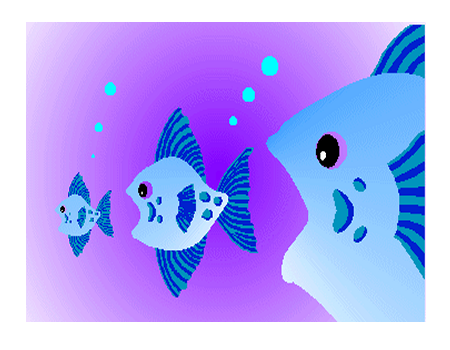ImageKit®.NET2 - What's New
Image Annotation and the Toolbar Control
 Annotate images in the ImageKit
Control NEW!
Annotate images in the ImageKit
Control NEW!
The ImageKit control allows you to annotate images by displaying text, lines,
and various shapes on top of the images loaded in the ImageKit Control. All
annotation objects can be saved independently of the image they annotate. Saved
annotations can be loaded onto different images. Annotations can be edited
after they are created, they can be moved, reshaped, rotated, etc. Annotations
can be embedded into image files. Annotation methods may be called with code or
used via the new Toolbar Control.
 Annotate images with the Toolbar
Control NEW!
Annotate images with the Toolbar
Control NEW!
The new Toolbar Control is a user friendly interface that lets
you annotate images visually! Simply place the Toolbar Control on your
form, set it to correspond to the ImageKit Control and thats it. You can now
use any or all annotation functions to edit or annotate your images, without
writing a single line of code!!
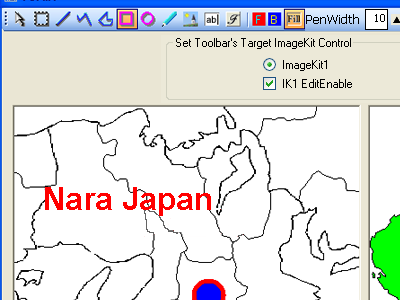
Use the Toolbar Control on a MDI with a standard toolbar and instantly create and easy to use painting application.
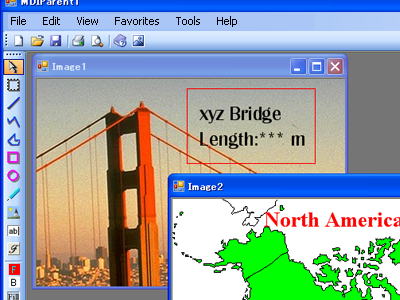
 Draw text, lines, shapes, and other annotation
objects
Draw text, lines, shapes, and other annotation
objects
Create straight lines, polylines, polygons, ellipses, pen (free hand lines),
text, etc. Each is a distinct annotation object that can be placed on the
loaded image, displayed, moved, altered, saved to file, or embedded in the
image.
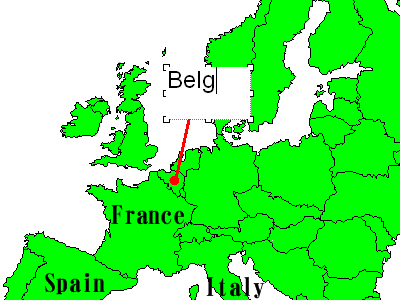
By setting a file name, the PasteImage annotation object can paste a new image in the ImageKit Control. NEW!
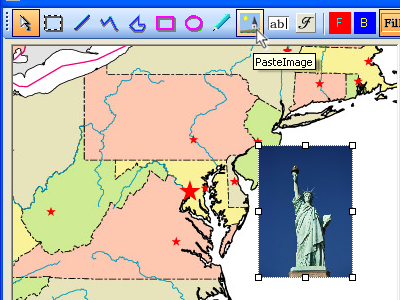
Objects are drawn by annotation methods that can be accessed via the toolbar or called independently by code. The toolbar can be designed to contain only those functions that you specify.
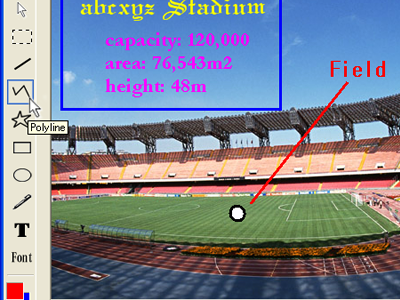
 Edit the Annotation Objects
Edit the Annotation Objects
After creating annotation objects and placing them on an image, the objects can
be moved, their shapes or contents altered, rotated, and so on.
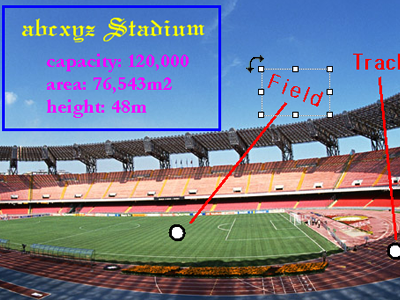
By right clicking the selected annotation objects context menu is displayed where various annotation and editing functions are available. Any functions available through the toolbar or context menu can also be called independently in the annotation methods.
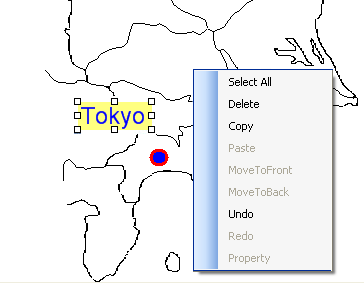
From the Context Menu select "Properties" and display the dialog below. This allows you to edit the annotation object after it has been created.
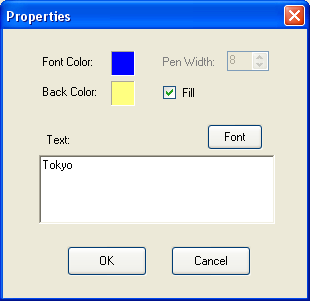
 Saving and Loading the Annotation File
Saving and Loading the Annotation File
All annotation objects and settings can be saved in an annotation
file that is independent from the image on which the annotations were drawn.
The annotation objects saved in the annotation file can be
loaded again and displayed on any image, not just the image on which they
were originally drawn. Since the annotation file is an xml file, it
is even possible to edit the annotations without loading them by using a text
editor.
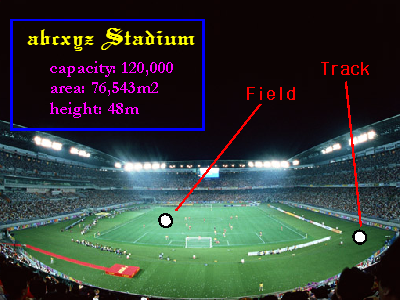
 Embed annotations into the image (rasterize
annotations)
Embed annotations into the image (rasterize
annotations)
All annotation objects drawn on images in the ImageKit Control can be
rasterized and embedded in the image data. The resulting image can be saved in
any format supported by the ImageKit.NET2.
Here is an example of an image with a "Pen" annotation object drawn on it. The annotation has been rasterized and embedded into the image and saved in JPEG format.
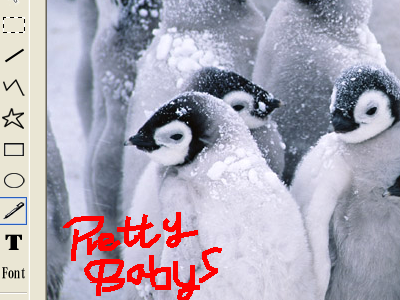
Below is a screenshot of this rasterized JPEG image, display in an image viewer.
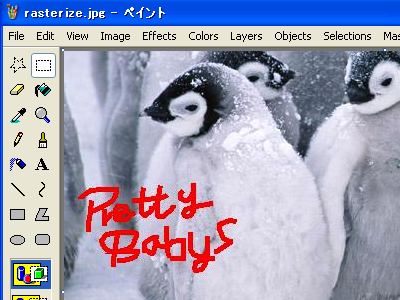
WebCameraControls
These controls provide functions to preview and record movies in avi format and to play movies in avi, mpeg, and other formats
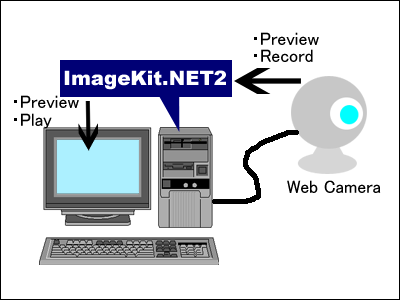
The ImageKit.NET2 WebCamera Preview Control
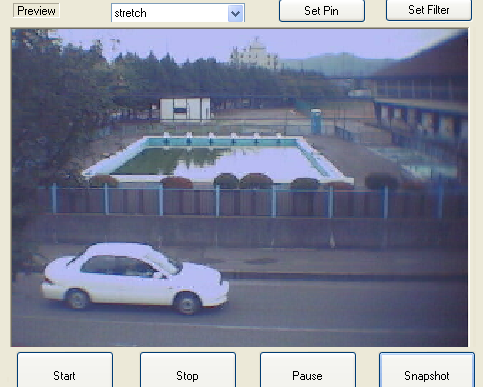
An example of one of the WebCamera's Setting dialogs
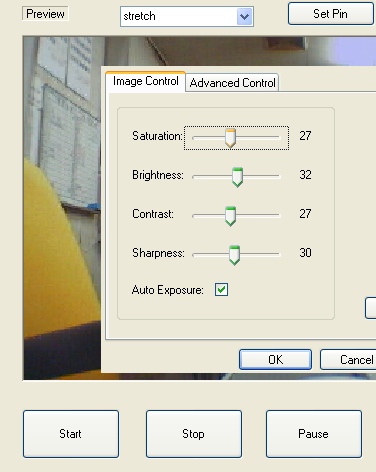
Position Images
 Position images in the ImageKit ControlNEW!
Position images in the ImageKit ControlNEW!
In scale display a small image is centered in the ImageKit Control by default. Now, you can position it anywhere within the ImageKit Control.
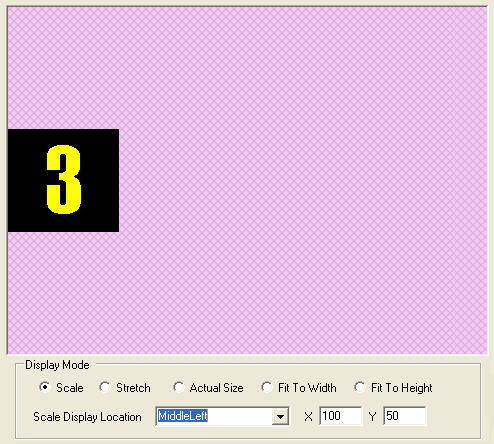
In actual display mode too, even large images can be positioned in the ImageKit Control.
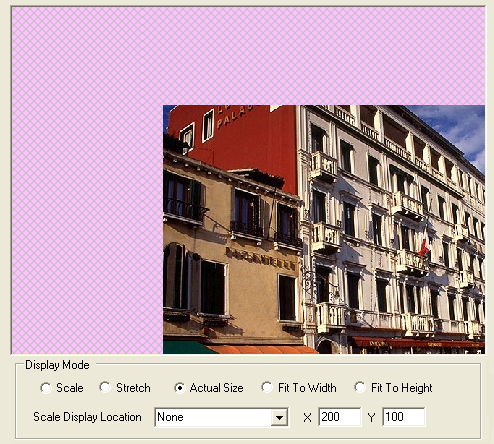
Deskew Images
When a scanned image or an image saved to file is skewed, use the deskew function to repair it!
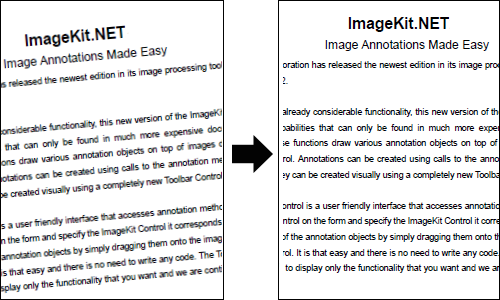
Save images to PDF Document
Save BMP or JPEG images in PDF documents using these easy to use steps: start a pdf document; add a page; add images to the page in specified locations; end the page; and end the document.
Saving an image in PDF with the ImageKit.NET2
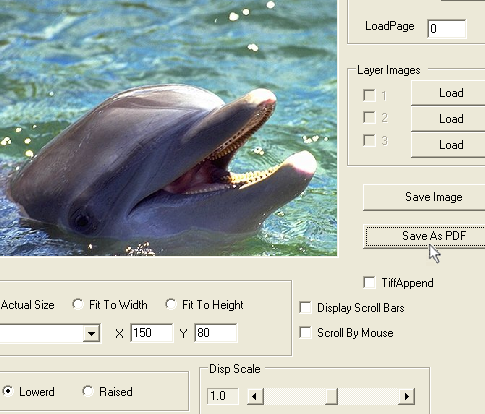
The resulting pdf document displayed in Adobe Reader
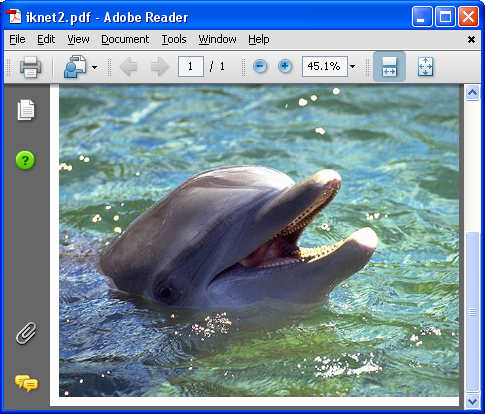
Expanded Image File Format Support
The ImageKit.NET2 includes a Plugin (Win32 Dll Files) that expand support for image formats not supported by standard .Net Framework. By including these plugin files with your application you can load and save JPEG2000 (Part1), Jpeg Progressive DCT, BMP Compressed (4 bit and 8 bit), and FPX image files.
Improved File Transfer
FTP and HTTP file transfer methods now support image data in byte array.
